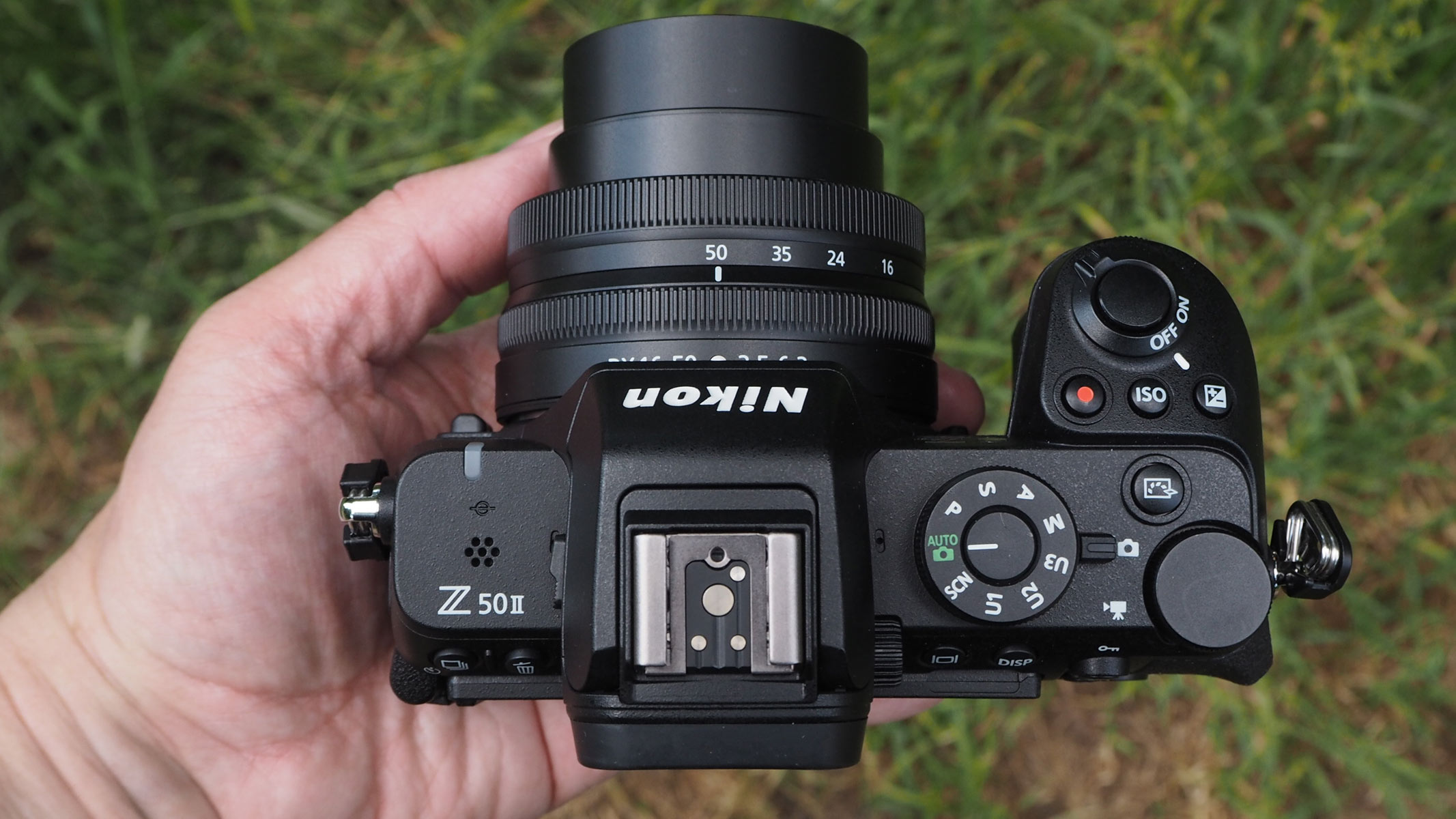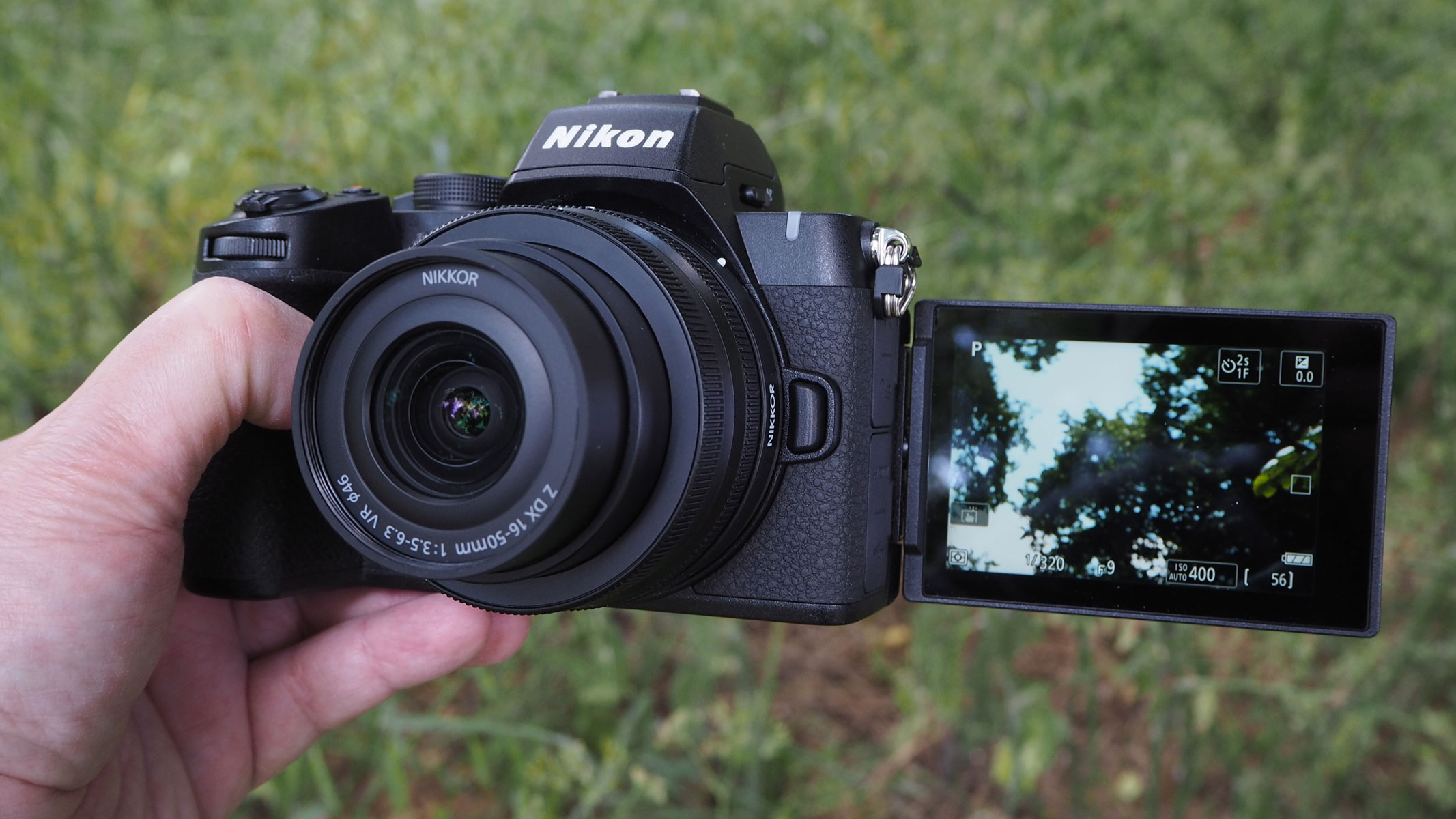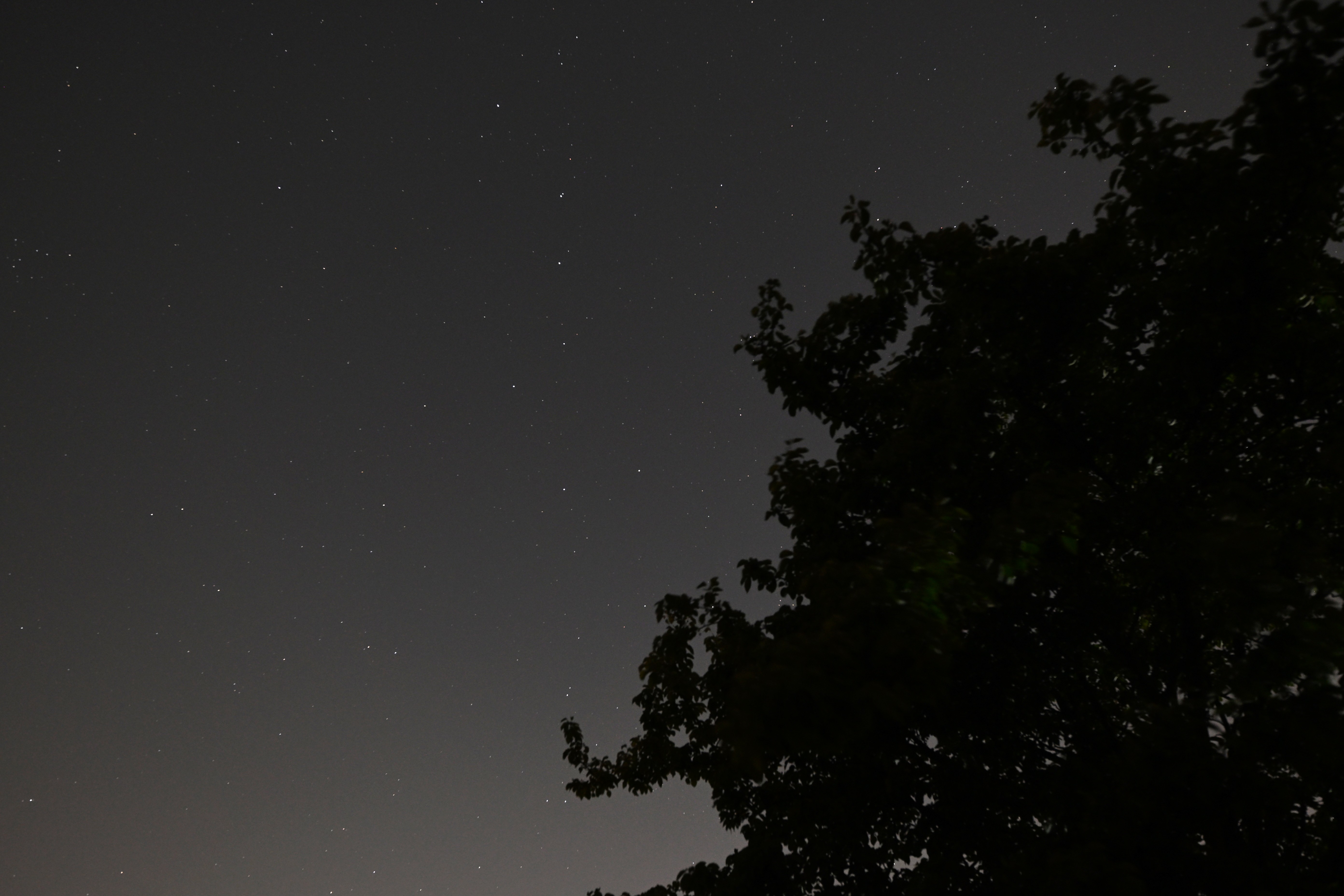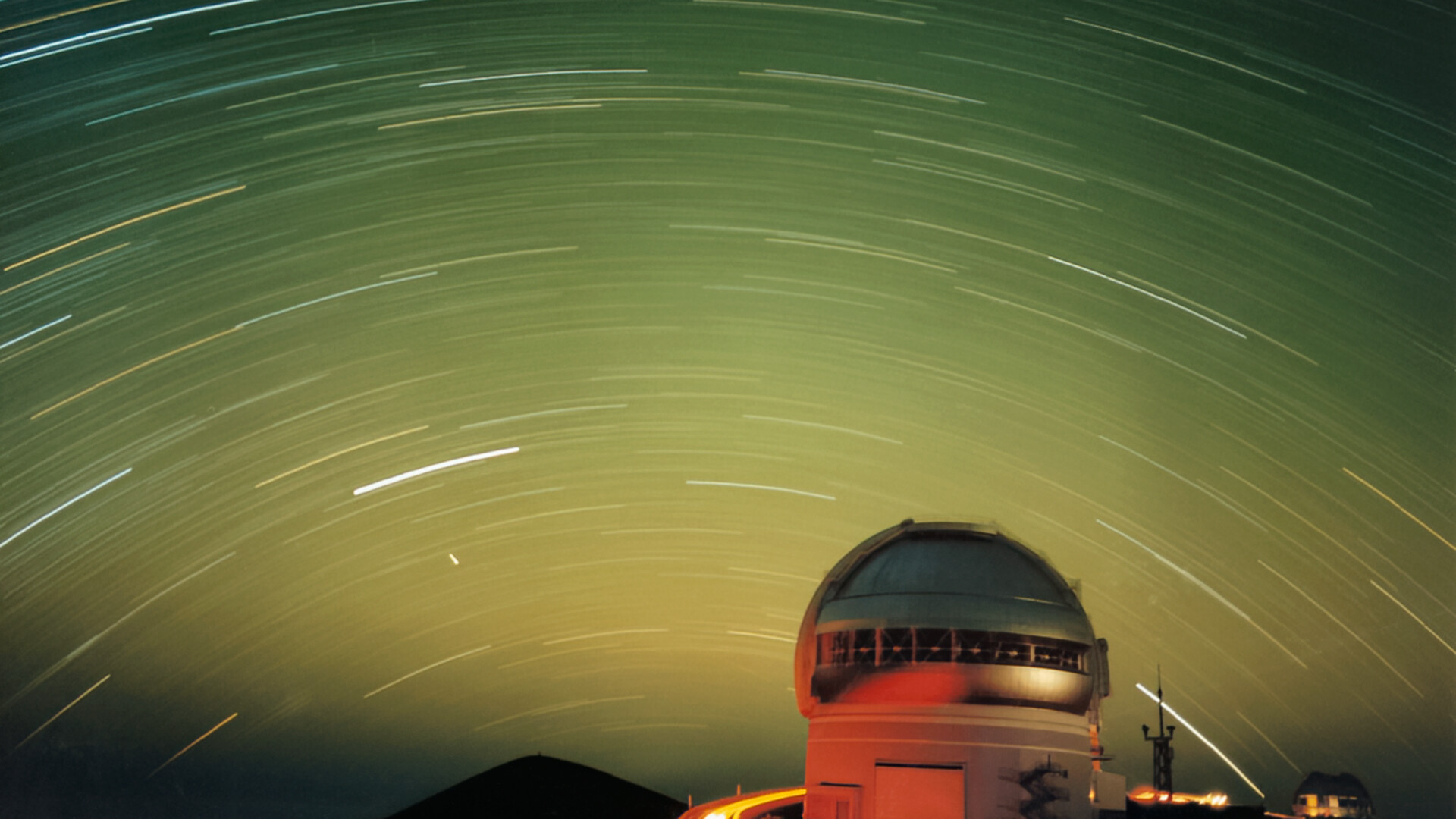Space Verdict
The Nikon Z50 II provides a portable solution for everyday snapping due to its compactness. It’s a DSLR-styled camera with an APS-C sensor but while an entry-level model, it’s not inexpensive. However, images straight from the camera really sing in terms of color fidelity and naturalistic detail, requiring little if any post-production from the user. Finally, for astrophotographers, there are sufficient manual settings that can be adjusted to their heart’s content to achieve optimal results.
Pros
- +
Feature-packed and compact
- +
Impressive viewfinder and rear screen
- +
More than satisfactory image quality
Cons
- -
APS-C sensor rather than full frame
- -
Only one memory card slot (compartment shared with battery)
- -
No in-body image stabilization, only electronic vibration reduction
Why you can trust Space.com
Not to be confused with the numerically similar Canon EOS R50 or R50 V, which, like this Nikon, squeezes an APS-C sensor into a compact chassis, the Z50 II updates and revitalizes its brand’s entry-level mirrorless camera. With an eye on hitting an affordable price point, it doesn’t come with a mains charger for its removable battery, just a USB lead without a mains plug. However, the body is lightweight and doesn’t feel plastic-y. Plus, there’s a decent-sized handgrip that most budget models lack.
So, while ostensibly the Nikon Z50 II is an entry-level camera that sits below the full-frame sensor models in its Z series mirrorless range, does its operation and delivery see it punching above its weight? It may be relatively inexpensive compared to the likes of the OM System OM-3 or Fujifilm X100 VI, but can it still provide a competent tool not just for multiple subjects but specifically for astrophotographers? We tested it to see if it could make it into our best cameras for astrophotography guide. Here are the results...
Nikon Z50 II: Design
★★★★
- Conventional consumer DSLR-type layout, albeit in a more portable mirrorless form
- Flip-out and tilt 3.2-inch LCD screen plus ultra-high-resolution eye-level electronic viewfinder
- Dedicated buttons for the selection of ISO while exposure control in tandem with the touchscreen aids fledgling astrophotographers

It may sound like an obvious thing to note, but the Z50 II very deliberately looks like a Nikon; its DSLR-style appearance nodding to the design and layout of its maker’s cameras over the past quarter of a century. It’s reassuring that when buying a Nikon, you do so in the knowledge of getting pretty much exactly what you anticipate.
In practice, this means that, despite the compact chassis, there are still enough physical buttons and controls that you can exercise tactile, manual control. At the same time, its layout and operation should not feel overwhelming for the uninitiated. The largest and most prominent control on the camera is a raised shooting mode dial with both Program, Aperture Priority, Shutter Priority and Manual settings enabling us to exert some manual control for night sky photography, plus a fully auto mode. You also get a Scene mode with pre-optimized settings for common subjects, plus further user-customizable settings for saving personal preferences. All pretty standard stuff.
This chunky dial is ergonomically encircled by a lever for flipping between stills and video modes, while the raised shutter release button found on the slope of the hand grip is similarly encircled by the camera’s on/off switch. Thankfully, this proves easy enough to locate and operate with a flick of the thumb in the pitch dark when attempting astrophotography.
A one-inch, 2360K dot resolution eye-level electronic viewfinder with built-in eye sensor for self-activation sits directly above the flip-out, tilt and swivel 3.2-inch LCD. For added convenience, the latter is also a touch screen. This works well as key settings can be adjusted in the dark when shooting the night sky via the screen rather than having to delve deep into menus. The LCD offers a respectable 1040k dot resolution, so if attempting manual focusing, you can be reasonably sure you’ve got your scene sharp.
System: Nikon Z mount
Sensor: 20.9 megapixels / 20.9MP backside illuminated 23.5 x 15.7 mm APS-C CMOS sensor
ISO range: ISO 100 -51200 (expandable to ISO 204800 equivalent)
Burst rate: Up to 11FPS continuous shooting or 15FPS in silent mode
Autofocus: 209 focus points with eye detection AF
Video: Up to 4K resolution clips at 60FPS
Screen: 3.2-inch angle-adjustable, 1040K dot resolution touchscreen LCD
Dimensions: 5 x 3.8 x 2.62-in (127 x 96.8 x 66.5 mm)
Weight: 1.2 lbs (550 g) with battery and memory card
Both EVF and LCD offer 100% frame coverage, so what we see is what we get in terms of shot composition. Nikon claims the camera’s EVF is the brightest in its class and, in practice, it proves sufficiently large and clear as to be useful whether shooting indoors or out. Like others of its ilk, I can forget I’m not looking at the scene via an optical viewfinder, so life-like is the image.
Breaking space news, the latest updates on rocket launches, skywatching events and more!
A decent-sized handgrip on an entry-level model isn’t always easy to find, but fortunately, you do get one here. The design of the Z50 II enables a firm and steady grip in the right hand, while your left hand is curled around whichever lens you’ve fitted. There’s no sophisticated body integral sensor shift image stabiliszation mechanism here, unfortunately, as I’m used to in models costing just a bit more. Only electronic vibration reduction is provided. As ever, if you want a budget camera, you must make some compromises.

Nikon Z50 II: Performance
★★★★
- APS-C CMOS sensor providing a 20.9MP effective resolution from 21.51MP total
- Up to 4K resolution video clips at 60FPS
- 3:2 aspect ratio images by default mirrored in 3:2 aspect ratio of provided LCD screen

Shooting to a single SD/SDXC card slot, it may be the ‘baby’ model in its maker’s Z series, but the response times of the Nikon Z50 II are as swift as I’d expect from a mirrorless camera based on a DSLR-like design and control layout. A half-press of its shutter release button and images are captured quicker than it took me to blink.
In this way, I can keep my attention fully focused on my subject rather than what the camera is doing, which is exactly as it should be. The Auto Focus detection range here is more than adequate, being able to find focus in conditions from the equivalent of -9 to +19EV. If I wanted to, I could pretty much point and shoot all the way. However, I did dip into manual settings to more precisely control results for night shooting. For example, I was typically manually setting exposure times via the lozenge-shaped virtual backscreen buttons for night sky photography. I set it to between two and five seconds in duration. On top of this, I was shooting at maximum aperture, which in the case of the Nikkor Z 14-24mm S series lens is f/2.8. I adjusted the ISO speed to suit, varying it from ISO 800 to ISO 1600 and monitoring results on screen. This gave a broad indication of what I was achieving in the dark.
However, something to be aware of is the fact that the brightness of the screen under such circumstances can trick your eyes into thinking you’ve captured an image a little brighter than it subsequently appears when downloaded and viewed in daylight on a desktop monitor.
At all times for shots of celestial objects, I was using a tripod and setting the camera’s self-timer to a delay of two seconds, after the shutter release button was fully pressed, to avoid any instance of camera or tripod wobble resulting in blurred image detail.
While I feel the 20.9 effective megapixel images this camera offers are more than plentiful for not only capturing celestial objects but landscapes, wildlife and more, inevitably some critics will complain that you’re getting a smaller APS-C sensor here rather than the full frame chip found in Nikon’s top-end ‘Z’ models. Balanced against this is a lower price tag. And, if all you are thinking of doing is reviewing the shots you take on a laptop or desktop rather than producing wall-sized prints, then arguably a full-frame sensor isn’t required and the money saved can be spent on lenses and other accessories.
Nikon Z50 II: Functionality
★★★★
- A choice of JPEG, HEIF or RAW formats when shooting stills
- MOV or MP4 formats selectable for video
- ISO 100 to ISO 25600 light sensitivity settings allow plenty of in-camera adjustment

Direct compatibility is offered with Nikon Z-mount lenses as well as Nikon’s older F-mount lenses via an adapter. If you use the Nikon Z50 II with the retractable 16-50mm f/3.5-6.3 kit lens, you first must fully unfurl it before you can operate either the camera or lens. This adds a further couple of seconds to your start-up time, which is potentially an issue if you spot a potential image in your mind’s eye before the Nikon is powered up and ready. Many may feel, however, it’s worth it to maintain a relatively slim profile for camera and lens combined. If using the chunkier and more prominent Nikkor Z 14-24mm f/2.8 S series lens, this isn’t an issue; screw the lens into place before you head out for the evening and you’re ready for whatever the night sky reveals to you.
As noted, with its manufacturer’s proprietary Expeed 7 processor on board, the Nikon is swift to respond when it comes to AF performance, which here takes the form of hybrid phase/contrast detection Auto Focus. Furthermore, you’re offered subject detection for up to nine subject types, functionality inherited from its higher-end Z8 and flagship Z9 cameras.
For videographers, as well as the ability to shoot 4K resolution clips at up to a cinematic looking 60FPS, alternatively, you can capture Full HD at 120FPS to achieve slow motion results. Interestingly, the Nikon Z50 II is also the first in its series to feature a Product Review mode for those presenting to the camera who want to subtly shift focus to objects they’re showing in the foreground during recording. Another first is a self-timer accessible in video mode as well as when shooting stills, thereby allowing for a delay before recording starts. As noted earlier, setting the self-timer for astrophotography is obviously a must to avoid the mere pressing of the shutter release button jogging the camera and thereby potentially introducing blur to a long exposure capture.


Nikon Z50 II: User reviews
Fellow users and reviewers of Nikon Z50 II claim that it is a fun performer for those on a budget. Others summarize that it exudes professional power in a ‘baby’ body. Though it lacks in-body image stabilization, which is unfortunate, it’s still described as a pocket rocket that’s a worthy successor to the 2019 original. The consensus follows its maker’s claim that it is designed to appeal to first-time camera buyers who may have just previously used a smartphone to take pictures and record video. One of the best value mirrorless cameras around at this moment in time is the conclusion of many.
How we tested the Nikon Z50 II
I used the Nikon Z50 II in daylight conditions that included both overcast days and strong sunlight and was pleased to witness a good degree of detail maintained in both shadows and highlights. Whereas I mostly used the compact kit lens for general-purpose everyday shooting, it was the Nikkor Z 14-24mm f/2.8 S that I used for night sky photography.
Initially, during my test period, heavy cloud meant only the brightest of celestial objects, such as the North Star, were visible. Fortunately, when the weather improved,the Big Dipper / Plough came clearly within sight of my lens.
Should you buy the Nikon Z50 II
✅ You’re seeking an affordable entry point into Nikon’s mirrorless Z system: This camera is your ideal starting point.
✅ You want a compact and relatively lightweight camera: This camera will encourage you to get out and attempt more astrophotography.
❌ You’d prefer a full-frame sensor: If you want bigger prints, this isn't the camera for you.
❌ You’re a complete astrophotography newbie: Whereby a hand-holding Starry Sky AF mode, as found on the OM System OM-3, may prove useful.
The Nikon Z50 II is a very approachable everyday mirrorless camera at an affordable price point that should appeal to both fledgling photographers and would-be content creators alike. In doing so, it battles directly with the likes of the Canon R50 V and Sony’s ZV compact series. But in my opinion, it feels more like a real camera than both thanks to its more conventional control layout and design, including eye-level viewfinder as well as flip-out and twist LCD screen.
The Nikon’s menus are easy to navigate — results straight out of the camera look impressive and its operation is sufficiently intuitive not to require recourse to any manual. Yes, it doesn’t have the full-frame sensor and body integral image stabilization of rivals at twice or even three times the price, but as ever in life, you get what you pay for. For what’s requested in terms of outlay, the Nikon Z50 II feels like a very fair proposition.
If this camera isn't for you
Like Canon’s R50 V, the Nikon Z50 II is aimed at budding content creators of every description, so Canon’s more pared-back rival is an obvious direct alternative. We weren’t keen on the fact that the Canon omits both an eye-level viewfinder and a built-in flash, but those who want a camera that concentrates on the essentials may find it viable.
For those who prefer a camera that not only obviously looks like a camera, but one with retro looks borrowed from the days of film, further alternatives to the Nikon Z50 II include the Fuji X100V and VI cameras. These, like both Nikon and Canon, incorporate an APS-C-sized sensor.
One further caveat is whichever system you choose, be mindful that accessories and lenses aren’t directly transferrable — at least not without an adapter. So, if you already own a bunch of Nikon F lenses from the early days of digital or further back in the heyday of film, it might be worth sticking with Nikon. If you’re trading up from a smartphone, however, which I reckon most of the Nikon Z50 II’s potential audience will be, then it’s not an issue and you’ll find this one a capable contender at a value-added price.
Gavin has over 30 years’ experience of writing about photography and television. He is currently the editor of British Photographic Industry News, and previously served as editor of Which Digital Camera and deputy editor of Total Digital Photography.
You must confirm your public display name before commenting
Please logout and then login again, you will then be prompted to enter your display name.

